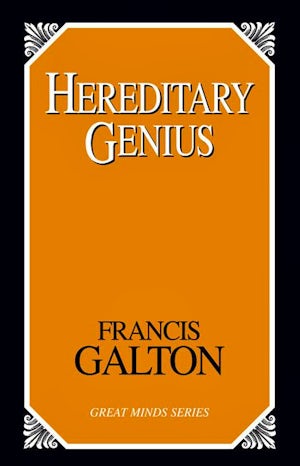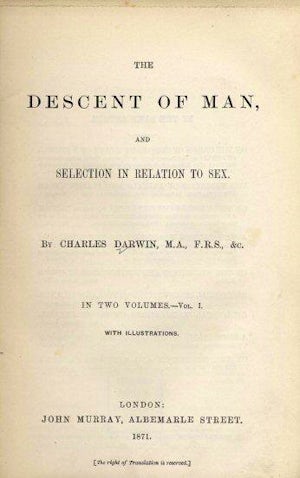1928. Published in 1928, Columbia, or the Future of Canada was the second contribution by author George (Stanley) Godwin, son of the renowned British architect the same name, to the To-day and To-morrow series (see the entry on this series on this website). His first book for the series: Cain, or the Future of Crime (1928) is reviewed separately. During his brief residency in Canada, Godwin lived in British Columbia, hence the title of the work. Indeed his whole perception of Canada is heavily skewed by his west-coast experience and the prevailing attitudes of Western Canada before 1920, at a time when the small population was sparse and largely rural (and almost completely Caucasian outside of the reserves for aboriginal people), before prodigious oil and gas discoveries and before rising trade with and immigration from the Pacific Rim made Vancouver a thriving metropolis.
Godwin begins by discussing the imperial bias of the metropole (England) to the daughter colony (Canada), and the widening political and ideological gulf between the metropole and the emigrants and other colonists as time passes. He asserts that Canada, especially western Canada, has become so “Americanized” that it is only a matter of time (he later speculates 1953 as the decisive year) before Canada joins with the United States to form “the Federation of North American States as self-governing states” after “Battleships flying the flag of the Rising Sun, appeared off Vancouver” (82, 83). Large sections of the book are an explanation for the inevitableness of this union and a lengthy justification of the political/social merits and economic and racial benefits.
Godwin also devotes a significant section to the racial composition and immigration patterns of Canada, from Quebec to the West coast, covering everything from politics and religion to family size and racial qualities of the new immigrants and old pioneers. In this Godwin largely echoes Madison Grant’s The Passing of the Great Race (1916) in documenting the decline of Anglo-Saxon hegemony, and presages Grant’s Conquest of a Continent (1933) in terms of detailing waves of expansion west and the changing ethnographic makeup, especially in the prairies and lower mainland. Godwin also alternately echoes and departs from his contemporaries, like Emily Murphy and her racial loathing of the Orientals on Canada’s west coast, with muted praise for their frugal and industrious way of life, but harbors suspicions of their high birth-rates and unassimilable nature:
Your Japanese has rooted objections to birth-registration and birth control (p 36)… The Chinaman presents another angle to the problem. He is hard-working, honest and inoffensive. His ambition is to amass money and return to the Celestial Land of his ancestors (p 37)… Ultimately the two conflicting civilizations will have to settle the matter of which is to survive: White or Yellow (p 38).
But, whereas Grant despises the ‘Alpine’ Slavs (Ukrainians, Russians, Poles and eastern Jews) contaminating Anglo-Saxon Protestant America and lionizes the Nordics of pioneer stock, Godwin reverses this bias with a disdain for the effete and cultivated British aristocrat or middle-class urban functionary, and praises the “hardy Slav of peasant-stock with the rough sheepskin coat and big, broad wife” who works as hard or harder than he does. Indeed, along with “Mr H.G. Well’s time machine” (80), Godwin uses the descendent of this Slav peasant, Professor of History Ivanovitch Koshkareff, of the University of Saskatchewan, and author of United America: A Retrospect. (Kegan Paul: To-Day and Yesterday Series) to forecast the bright future of Canada as part of the U.S.N.A., from the vantage point of 2030! It is here that time starts to unravel into a future that never was. Godwin’s Slavic professor turns through the pages of his retrospective scholarship, adding, editing, perfecting, and thus exposing his ‘history’ to the reader:
The Professor reads on, page by page, his massive Slav features impassive and noble. Peering over his shoulder we learn how the inability of the British-born Canadian to withstand the rigors of life upon the land resulted in the numerical predominance by the end of the twentieth century of the ‘man in the sheepskin coat with the big, broad wife’. He traces the rise of the Agrarian Movement until it became the most powerful political force in the country. (p 88, 89)
Ironically, Godwin makes no explicit mention (or prediction) of eugenics or compulsory sterilization in western Canada, despite the fact that this book was published in the same year as Alberta’s pioneering sterilization legislation was first passed into law. This is partly explained by Godwin’s return to England in 1920 after serving in the Canadian Army (and being wounded) during World War I, becoming a lawyer, noted author, and raconteur of his earlier Canadian adventures, which makes his racial pronouncements all the more interesting for their departure from the Nordicist dogma of contemporary American eugenics. Secondly, it would appear that Godwin wrote much of what became Columbia while he was still living in Canada, before eugenics became a prominent movement in Western Canada.
Godwin’s overt anti-Easterner bias and extensive diatribes against the railway companies that connected Canada and made British Columbia a viable part of the nation are continued with a conspiratorial prediction of the expansion of the railway’s monopolies of the expanding air transportation network that moves Canada firmly into the Twentieth Century. He also predicts emigration from Quebec into New England will become a veritable flood and radically alter the racial composition of this former Anglo-Saxon Protestant bastion, which was also postulated by Madison Grant, but never materialized, as the fleeing Catholics adopted the American WASP practice of birth-control and small families, and were ultimately assimilated in the melting-pot.
But it is his prediction of the ‘Great Agrarian Movement’ that is the most interesting eugenically and bizarre in its eerie foreshadowing of Maoist ideology in the 1950s, the Cultural Revolution of the 1960s, and Khmer Rouge policy in the 1970s, even more so because his forecasts were fictitiously contemporaneous with these actual ‘spontaneous’ cultural movements on the other side of the world and the cultural divide between ‘White and Yellow.’ Whereas Britain and the American Eastern Seaboard had been urban and industrial for some time, much of America’s heartland and Canada west of Toronto was still predominately rural and agrarian. In Columbia, after a predicted initial and rapid urbanization of the West, spurred by great scientific-technological advances, the wholesale mechanization of agriculture and daily life, as well as the advent of popular air-travel, there was a sudden turn-around, as his Slav professor reveals from the pages of his history text:
He describes the great Back-to-the-Land Movement, when the urban population left the cities, many of which were in a condition of semi-ruin following the collapse of monstrous skyscrapers, and returned to the land. We are given vivid pictures of the decline of old Quebec, of the decay of Montreal, Winnipeg, as the stream poured from overcrowded slums to the fertile prairie.
We learn how in pre-union days the old United States had become dominated by a particularly enervating type of feminine parasitism, notably on the great cities where luxury reached Babylonian proportions and morals decayed with the coming of the worship of barren womanhood. He tells how the new Americans were seduced for a time by this pernicious cult, became dual slaves of parasite wives and daughters, until the return to sanity and the ‘big, broad wife’.
We are told how, following the denudation of the forests of old America and the reckless dissipation of her natural resources and the destruction of the mortage-embarrased and insolvent agricultural community, and the collapse of the Gold Standard, following the great gold finds of Northern Ontario, the political centre of the Republic shifted from Washington to Regina. (p 90, 91)
While there are many other astonishing predictions that did not come to pass, one final ‘retrospective’ eugenical insult is offered here in regards to the ‘future’ fate of Canada’s aboriginal people, blamed on the Jesuits who converted and perverted them from their native paganism:
“The Red Man, as we know, ultimately solved the problem he presented [white society] by drinking himself out of existence in the comfort of those spacious reservations that had been secured to him by those fine old Jesuit missionaries.” (p 92)
Fortunately for us, and for the To-day and To-morrow series in general, Godwin’s prognostications for Canada was not an isolated effort. Columbia was soon followed by Achates, or the Future of Canada within the British Empire (1929) by easterner Eric Harris, which was a bit more conventional in its future forecasting, and offered a different perspective on many issues. As for Godwin’s future after leaving Canada, one can only hope that he became a better lawyer and establishment figure than prescient futurist-prophet. His other series publication: Cain, or the Future of Crime (1928) was so different in tone, attitude and expressed sympathies for eugenic doctrines, that it is hard to believe the two books were written by the same person. Perhaps by returning to Britain from Columbia, he was transformed in the same way as the hardy pioneers who colonized the prairies, but in reverse.
-Michael Kohlman
Godwin, G.S. (1928). Cain, or the future of crime. London: Kegan Paul, Trench, Trubner & Co.
Godwin, G.S. (1928). Columbia, or the future of Canada. London: Kegan Paul, Trench, Trubner & Co.
Grant, M. (1916). The passing of the great race. New York: Charles Scribner’s Sons.
Grant, M. (1933). The conquest of a continent: the expansion of races in America. New York: Charles Scribner’s Sons.
 1869:
Galton publishes Hereditary Genius
1869:
Galton publishes Hereditary Genius
 1871:
Charles Darwin publishes The Descent of Man
1871:
Charles Darwin publishes The Descent of Man